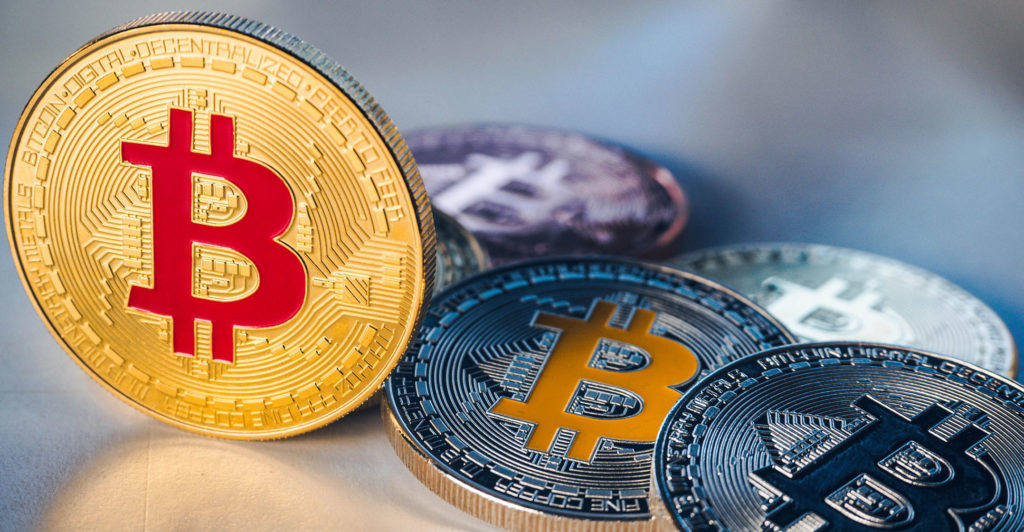 Every generation or so, money goes through an evolutionary shift, and 10 years from now the fiat currencies currently in use will be regarded as relics of a bygone age, much like the fax machine.
Every generation or so, money goes through an evolutionary shift, and 10 years from now the fiat currencies currently in use will be regarded as relics of a bygone age, much like the fax machine.
Cryptocurrencies backed by artificial intelligence (AI) are about to swarm the world of money, bringing with them a level of stability that central banks promised and never delivered. About to come is a whole new architecture for the world financial system, including investment.
In the world of investing, the days of the brilliant stock picker may be numbered. AI and predictive technology will swallow them whole.
All currencies suffer one critical deficiency: their values are unstable. That’s largely a function of central bank control over the issue of new money and the resulting inflation that eats at currency values. This complicates the world of commerce since all trade rests upon a floating barge of variable currency value.
South Africans understand what this means. The rand is the world’s most-traded emerging market currency.
This might be an extreme case, but all currencies in a free-floating system suffer the same problem.
Bitcoin attempted to change all this by removing money issue from the control of any central banks. There will never be more than 21 million bitcoins in issue. Since its launch in 2009, bitcoin has gone from nothing to more than US$12 000, making it the world’s best performing currency in the last decade.
Wild swings
The crypto universe has been defined by bitcoin and a few lesser coins powered by speculative interest and wild swings in value.
But as a payments system, none has been able to replicate the speed and convenience of a Visa card system with payment executed in seconds. That will change as technology and transaction speeds improve.
Lars Holst, founder of London-based crypto exchange GCEX, has studied the future of money for years and believes Africa is ripe for a crypto monetary revolution.
“I don’t think we are far away from replicating Visa and Mastercard payment systems in terms of speed. The whole settlement system in forex is inefficient,” says Holst, who previously worked in forex at Danish-based Saxo Bank.
 “The fiat money system has been corrupted by central banks printing excessive amounts of money and debasing the currencies. Many of the new cryptocurrencies coming to the world take this power out of the hands of central banks. It’s clear that the future is in crypto rather than fiat currencies.”
“The fiat money system has been corrupted by central banks printing excessive amounts of money and debasing the currencies. Many of the new cryptocurrencies coming to the world take this power out of the hands of central banks. It’s clear that the future is in crypto rather than fiat currencies.”
Bitcoin founder Satoshi Nakamoto and others have applied themselves to the question of a future money system using blockchain technology to verify and validate payments between two people transacting anywhere in the world.
In 2009, Satoshi explained the problem with the current fiat money system that inspired bitcoin: “The root problem with conventional currency is all the trust that’s required to make it work. The central bank must be trusted not to debase the currency, but the history of fiat currencies is full of breaches of that trust. Banks must be trusted to hold our money and transfer it electronically, but they lend it out in waves of credit bubbles with barely a fraction in reserve. We have to trust them with our privacy, trust them not to let identity thieves drain our accounts.”
The current monetary system Satoshi complains about is a relatively modern confection. As David Birch points out in his book Identity is the New Money, we entered the world of fiat currency when Richard Nixon ended the convertibility of the US dollar into gold in 1971. As such, fiat is relatively new. The next evolution is now about to sweep it aside.
“Just as the machine-made, uniform, mechanised coinage introduced by Isaac Newton in 1696 better matched the commerce of the Industrial Revolution, so we can expect some form of digital money will better match the commerce of the information age,” writes Birch.
Holst argues that fiat currencies, if they exist in 10 years, will have a small portion of the market. “We’re in the era of not just data, but information. We upload information to blockchain in encrypted form so it is not seen by other people. By 2030, we’ll see more private use of what people decide to do with their value. They will have simple keys to keep this information private in a global public network where it is logged but cannot be changed.”
Huge impact
What is about to be let loose on the world should terrify national governments and central banks. And the impact of cryptocurrencies on developing countries will likely be huge.
Vodacom and Safaricom launched the M-Pesa mobile money service in Kenya and Tanzania in 2007, allowing users to deposit money into an account stored on their cellphones and transfer funds using Pin-secured SMSes to other users — and redeem cash instantly.
Millions of previously unbanked people now have a payment system that bypasses the banks and is being studied around the world. It’s a relatively small step from this to the crypto sphere and monetary independence.
There is plenty of talk about money moving into the digital age, but we’re already there: cash accounts for only about 4% of the total money in the system. The poor — those without bank accounts — rely heavily on cash, but this comes at a cost.
 Cash is acceptable to vendors because its value is certain and, while counterfeit notes are known to exist, they are insufficiently plentiful to disrupt commerce.
Cash is acceptable to vendors because its value is certain and, while counterfeit notes are known to exist, they are insufficiently plentiful to disrupt commerce.
Enter the stablecoin…
Gregor Kozelj is the developer of the X8 stablecoin, one of several stablecoins offering currency stability by spreading assets over the eight top currencies in the world as well as gold.
Kozelj is a former portfolio manager who spent several years developing a technique for portfolio risk management that did not rely on predicting whether asset prices would go up or down, but on measuring and limiting downside risk. He then translated his system to investments and banking, where treasury systems could be stress-tested in milliseconds rather than the months it previously required.
It was out of this experience that he developed the X8 stablecoin. Backed by AI, it is designed to fight inflation through artificially intelligent reweighting of the eight underlying currencies and gold.
Many companies attempt to replicate this by spreading their cash over multiple currencies, but this is both expensive and unwieldy. There are simply too many moving balls to do this efficiently. Each time someone invests in X8, new X8 coins are “minted” and cash is transferred into the eight underlying currencies and held at custodian banks. Once you are part of the stablecoin universe, you are able to make payments on the blockchain without using bank transfers.
“Many people say we are entering the age of AI, but we are already there,” says Kozelj.
No future
“I don’t see much future for fiat money 10 years from now. Fiat will probably still be in use, but I see the global monetary system being decentralised and taken out of the hands of central banks, which was the original vision of bitcoin and blockchain. In a decentralised world, anyone will be able to mint their own currencies. Whether they will be accepted by others or not is another question. But there will be many different cryptocurrencies that will achieve broad acceptance.”
Tether was first to be launched and is a crypto coin that aims to be linked 1:1 with the US dollar. Then came True USD, USD Coin, both linked to the US dollar, and Stasis Euro, backed by the euro.
Just as money is going through an evolutionary shift, so, too, is the world of investment. Advances in AI and quantum computing will connect us based on an intimate profile of each individual’s investment risk tolerances and appetite, and furnish opportunities not presently available, says Kozelj.
“AI will be able to track movements of capital and changes in competitiveness of economies around the world and adjust your stablecoin weightings at any given moment to provide money where it is needed, where it is most productive, so it is working for you. It will likewise revolutionise the world of investment by measuring in real time opportunities to maximise returns and growth on a global basis.
He adds: “History shows us that if you are not adapting to the changing economic environment, you need new money to purchase new productivity growth, which includes innovations. If the same amount of currency is in circulation, people cannot buy the new things even if such innovations would change lives and businesses for the better. It blocks progress.
“Every time we went back to the gold standard, which happened a lot in history, it was abandoned. Is gold that bad? No, it only failed because you cannot adjust the volume of gold in synchronicity with the rate of innovative, real productivity growth to keep the economy and prices stable.
“Naturally, runaway money-printing isn’t good, yet fixed money supply is just as dangerous, and both invariably lead to instability. Bitcoin has and will continue to have the same issue — it will have a fixed supply in the future. AI-driven stablecoins are one way to overcome this problem.”
- This article was originally published on Moneyweb and is used here with permission

